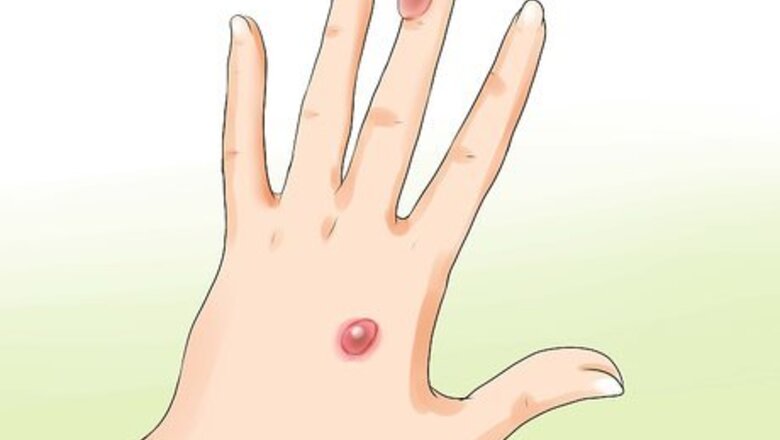
views
Treating the Blister
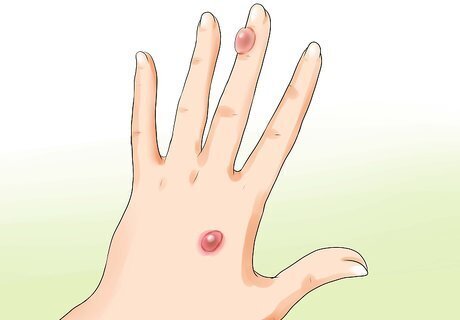
Leave the blister intact if it is not painful. The majority of blisters will heal naturally, without the need to be drained. This is because the unbroken skin covering the blister forms a protective shield which prevents infection. After a couple of days, the body will reabsorb the fluid inside the blister (known as serum) and the blister will disappear. This is the best option if the blister is not causing you any pain, as it minimizes the risk of infection. If the blister is on your hand or somewhere it will not be exposed to further friction, you can leave it uncovered as the air will help it to heal. If it is on your foot, you may want to cover it with a gauze or moleskin pad, which will protect the blister but also allow it to breathe. If the blister bursts on its own, allow the fluid to drain, clean the area well, then cover in a dry, sterile bandage until it heals. This will heal to prevent infection.
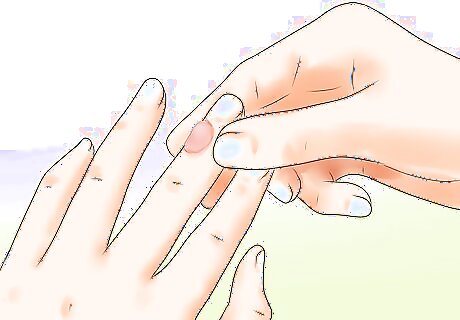
Drain the blister if it is causing you pain. Although doctors recommend that you avoid bursting a blister if at all possible, in some scenarios it is necessary to drain a blister, especially if is causing a lot of pain or pressure. For instance, competitive runners may need to drain a large blister on the sole of their foot if they have a race coming up. If you need to drain a blister, it is very important that you follow the correct procedure in order to avoid infection.

Clean the area with soap and water. The first thing you need to do is clean the skin on and around the blister using warm water and soap. Any soap will do, but antibacterial soap is best. This will help to remove any sweat or dirt from the area before you proceed with the draining.
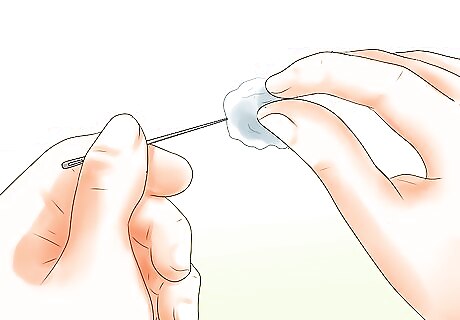
Sterilize a needle. Take a clean, sharp needle and sterilize it using one of the following methods: wipe it down with some rubbing alcohol; scald it with boiling water; hold it over an open flame until it glows orange.
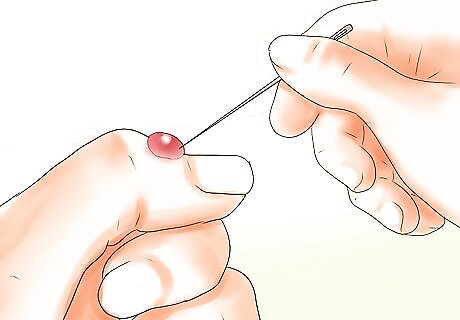
Puncture the blister. Use the sterilized needle to puncture the blister in several spots around the edges. Use a clean piece of gauze or tissue to gently compress the blister, allowing the fluid to drain. Do not remove the loose skin covering the blister, as this will help to protect it.
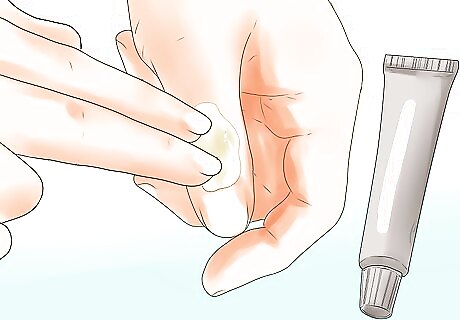
Apply some antibacterial ointment. Once all of the fluid has drained, dab a little antibacterial ointment or cream on the blister. Any over-the-counter antibacterial product will do, like Neosporin, Polymyxin B or Bacitracin. The ointment will help to kill any bacteria around the blister and fight off infection, while also preventing the bandage from sticking to the loose skin.
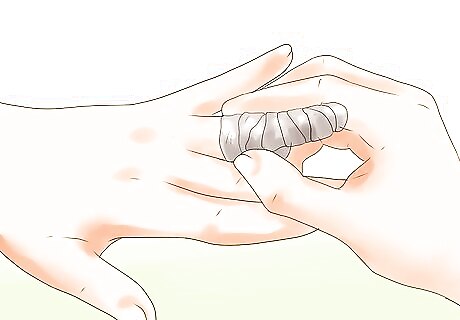
Loosely cover with a gauze pad or bandage. After you have applied the ointment, cover the drained blister with some gauze padding or a gel-based plaster. These will prevent any dirt or bacteria from entering the open blister, and also provide some comfort when walking or running if the blister is on the foot. You should apply a new plaster every day, especially if the existing plaster becomes wet or dirty.
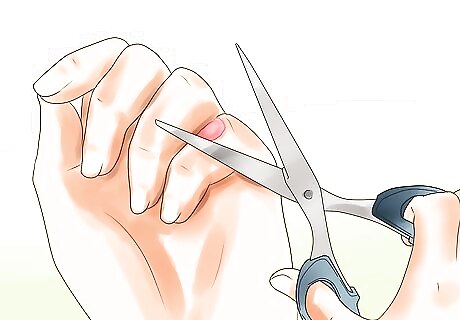
Cut away any dead skin and re-bandage. After two or three days, remove the bandage and use sterilized scissors to cut away any loose, dead skin. Don't attempt to peel away any skin that is still attached, however. Clean the area again, apply more ointment and cover with a clean bandage. The blister should be completely healed within three to seven days.
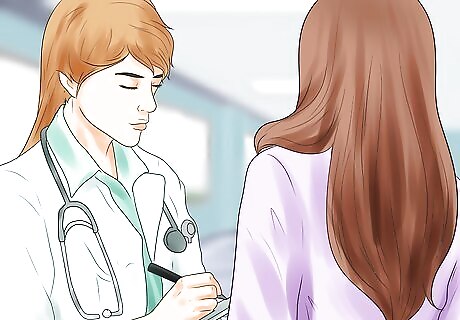
See a doctor if you notice any signs of infection. In some cases, an infection will develop despite your best efforts to avoid one. If this is the case, you should see your doctor immediately. S/he may prescribe a strong topical antibiotic or an oral antibiotic to clear the infection. Signs of infection include skin redness and swelling around the blister, a build-up of pus, red streaks on the skin and fever.
Using Home Remedies
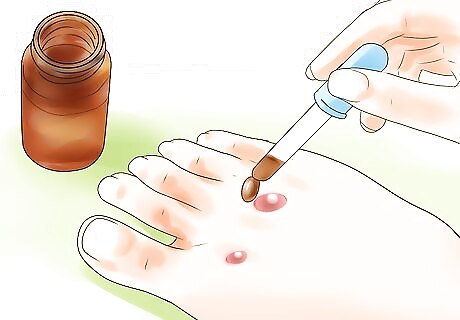
Apply tea tree oil. Tea tree oil is a natural essential oil with effective antibacterial properties. It is also an astringent, which means it can help to dry out the blister. Use a q-tip to dab a little of the oil onto a drained or lanced blister once a day, before applying a fresh bandage.
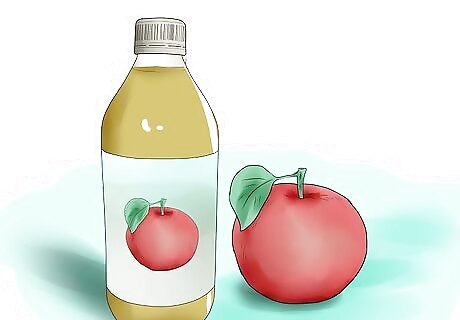
Use apple cider vinegar. Apply cider vinegar is a traditional home remedy for many minor ailments, including blisters. It can be used to ward off infection, thanks to its antibacterial properties. Apple cider vinegar can sting a lot, so you may want to dilute it to half strength with water before using a q-tip to dab it on the blister.
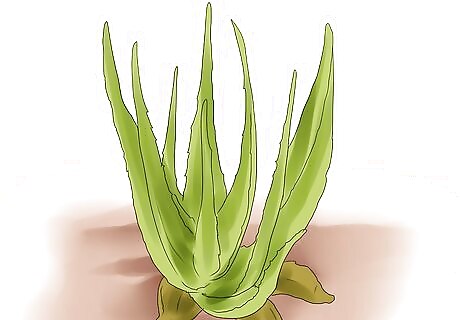
Try aloe vera. Aloe vera is a plant whose sap has soothing and healing properties. It is a natural anti-inflammatory and moisturizer, making it a great option for blisters caused by burns. To use, break off a leaf from the plant and rub the clear, gel-like sap over and around the blister. This is especially useful once the blister has popped, as it will speed up the healing process.
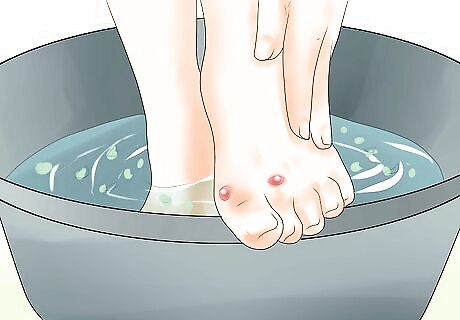
Soak in green tea. Green tea has natural anti-inflammatory properties, so soaking the blistered skin in a bowl or basin of cooled green tea can help to soothe swollen or inflamed skin around the blister.
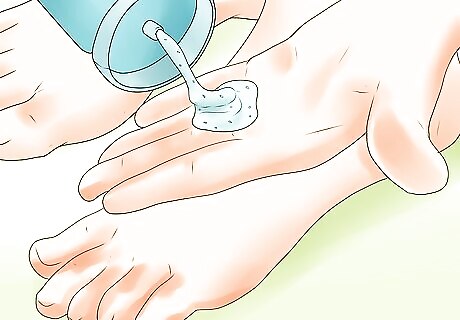
Use vitamin E. Vitamin E allows the skin to heal faster and helps to prevent scarring. It can be found in both oil and cream form at the drugstore. Simply smooth a little over the blistered skin each day to promote healing.
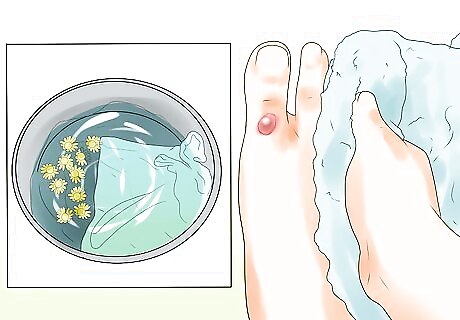
Make a chamomile compress. Chamomile has soothing qualities and can help to ease the pain of a swollen blister. Make a strong cup of chamomile tea, allowing it to brew for five to six minutes. Once it has cooled slightly, dip a clean washcloth into the tea until soaked, then wring out the excess moisture. Press this warm compress against the blister for about ten minutes, or until the pain subsides.
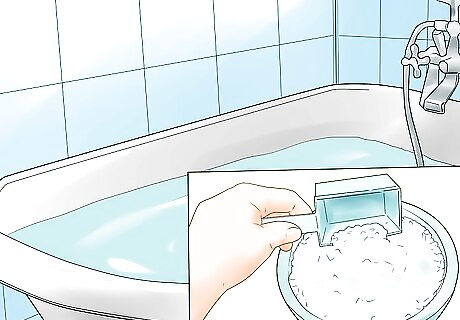
Soak in Epsom salts. Epsom salts help to dry out an unpopped blister and encourage it to drain. Simply dissolve some Epsom salts in a hot bath and allow the blister to soak. Be careful though, once the blister has burst the Epsom salts will sting.
Preventing Blisters
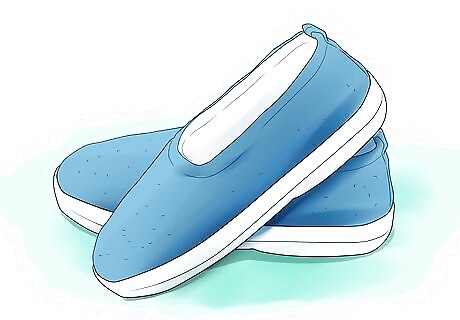
Choose well-fitting shoes. Many blisters form due to the friction caused by ill-fitting shoes. As the shoes rub or slip against the foot, they pull the skin back and forth, causing the outer layer of skin to separate from the inner layer, creating a pocket that becomes a blister. To prevent this from happening, invest in good-quality, breathable shoes which fit perfectly. If you are a runner, think about going to a speciality running store where a professional can make sure you're wearing the best fit.

Wear the right socks. Socks are very important when it comes to blister prevention, as they minimize moisture (which encourages the formation of blisters) and reduce friction. Choose nylon socks over cotton socks, as they provide more breathability. Wicking socks, which are a type of wool-blend socks, are another good option, as they draw moisture away from the feet. Runners can also find special athletic socks which provide extra cushioning in areas most prone to blisters.
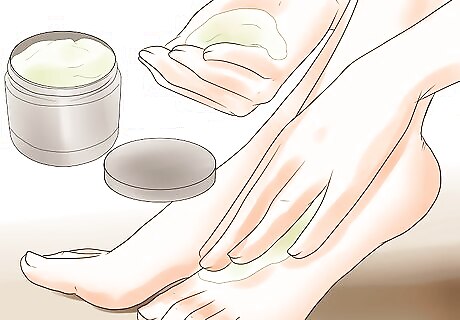
Use friction-reducing products. There are many products available over-the-counter which can be applied to feet before walking or running to reduce friction and the build-up of moisture. Try using a foot powder, which is sprinkled into the socks before wearing in order to keep the feet dry, or a cream which allows socks and shoes to glide over the skin, rather than causing friction.
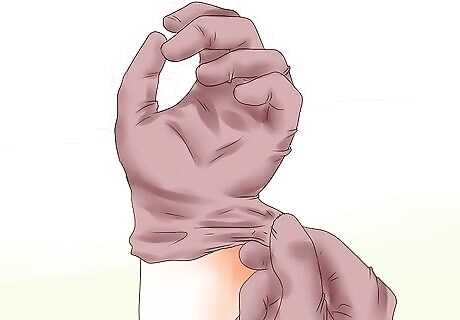
Wear gloves. Blisters often develop on the hands as a result of manual labour, such as using tools or shovels, or gardening. You can avoid such blisters by wearing protective gloves while doing such activities.
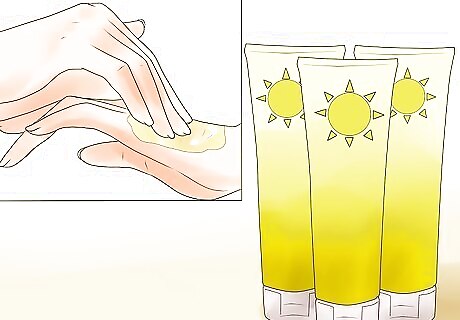
Apply sunscreen. Blisters can easily form on sunburned skin. The best way to prevent this is to avoid getting sunburned in the first place, by wearing a sunscreen with a high SPF, wearing light, long-sleeved clothing, and wearing sunscreen. If you do happen to get burned, you can ward off blisters with the liberal application of moisturizer, after-sun and calamine lotions.
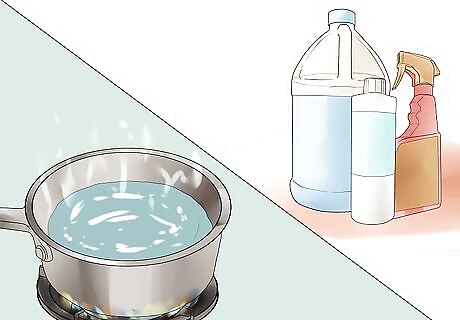
Be careful around heat and chemicals. Blisters can form after being burned by hot water, steam, dry heat or chemicals, so you should make sure to take the proper safety precautions when handling hot objects, such as kettles or stoves, or using chemicals, such as bleach.










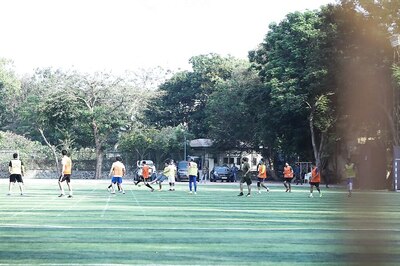





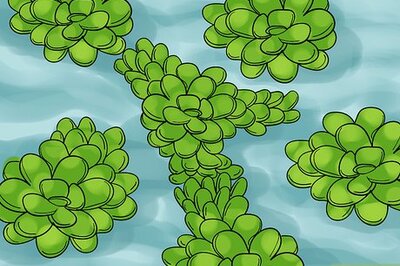


Comments
0 comment